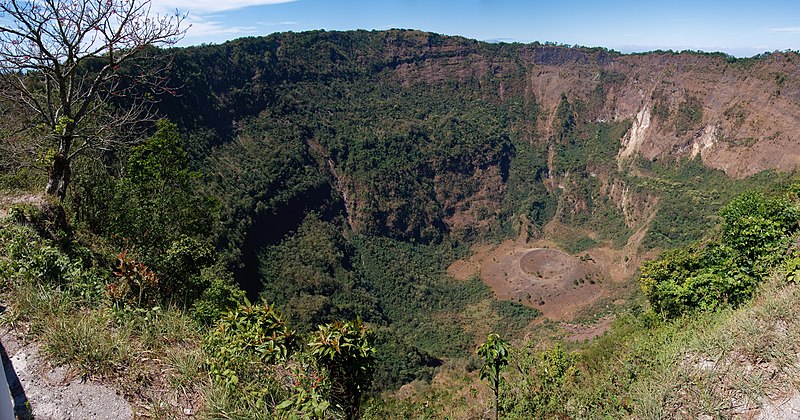For the last three decades, a heartbreaking civil war and its aftermath put Central America’s smallest country out of the minds of most holidaymakers as a destination – but with stability and security returned, these days travel to El Salvador is regularly touted by the likes of Travel Agent magazine and the BBC.
There are no grand monuments or much extensive infrastructure in this tropical land just a tad larger than Wales and a few acres smaller than New Jersey. What it does have is exuberant, unspoiled nature and ecotourism; some of the best beaches for surfing in Central America; utterly charming cobblestone-paved towns which haven’t yet been overrun by over-appreciative gringos; and of course the friendly, welcoming Salvadorans themselves. I’d add to that one particular set of Mayan ruins unique in all the Americas. A little more detail:

UNSPOILT NATURE
The rugged interior harbours a number of spectacular sites and national parks, many of volcanic origin, such as El Boquerón (above), Los Volcanes, El Imposible, and Montecristo, with majestic forests, spectacular rivers and waterfalls, and overlooks where the views will make your heart sing. Among the numerous volcanic crater lakes up in the mountains, Lake Coatepeque and Lake Ilopango are two of the loveliest.

CHARMING TOWNS
All over Central America, visitors flock to (and some stay as expats in) small, historic towns and cities such as Granada, Nicaragua and Antigua, Guatemala. But in El Salvador you can still find more of the authentic local vibe in places like Suchitoto (top), Santa Ana, and towns with a strong indigenous flavour along the so-called “Route of the Flowers,” Nahuizalco, Salcoatitán, Ataco, Apaneca, and Juayúa.
PACIFIC COAST BEACHES
Perhaps the single most popular attraction so far is the country’s beaches, such as Las Flores, San Blas, El Tunco, El Sunzal, and Las Tunas, where apart from the very occasional large resort such as the Royal Decameron Salinitas you’ll find mostly small, funky villages and towns with a barefoot tropical feel, many catering to a youthful surfing crowd. On some of these beaches you can also see giant mama sea turtles laying eggs and babies hatching (under the supervision of conservationists).

MAYAN SITES
Yes, the territory that now makes up El Salvador is part of the Mundo Maya, and no, it doesn’t have spectacular lures such as Guatemala’s Tikal or Copán in Honduras. Pyramid sites such as Tazumal, Quelepa, and San Andrés are modest at best. But the unique site to which I alluded above is the Pompeii of the Americas, Joya de Cerén, a village of commoners which was preserved by a volcanic eruption 1,800 year ago and offers insights into daily life that most of the better known sites throughout the region do not.
SAN SALVADOR
Then of course there’s the country’s capital, San Salvador, which though I list last is definitely worth some of your time on a visit to this country thanks to a downtown with highlights such as a National Theatre (Central America’s oldest) and the Palacio Nacional, a grandiose neoclassical building which has housed all branches of government; interesting museums covering anthropology, art, the military, and the civil way; and a particularly astonishing modern landmark, the lovely, avant garde El Rosario church.
In this blog we’ll be going into more detail on all the above in the months ahead. We hope you’ll join us. In the meantime, check out Iberia’s flights from the U.K. and Spain, and get more information here.
photos | RodrigoMorán, Jpyle490, Sunvalley Surgf & Skate Shop, David Paul Appell, Jose Quintanilla



